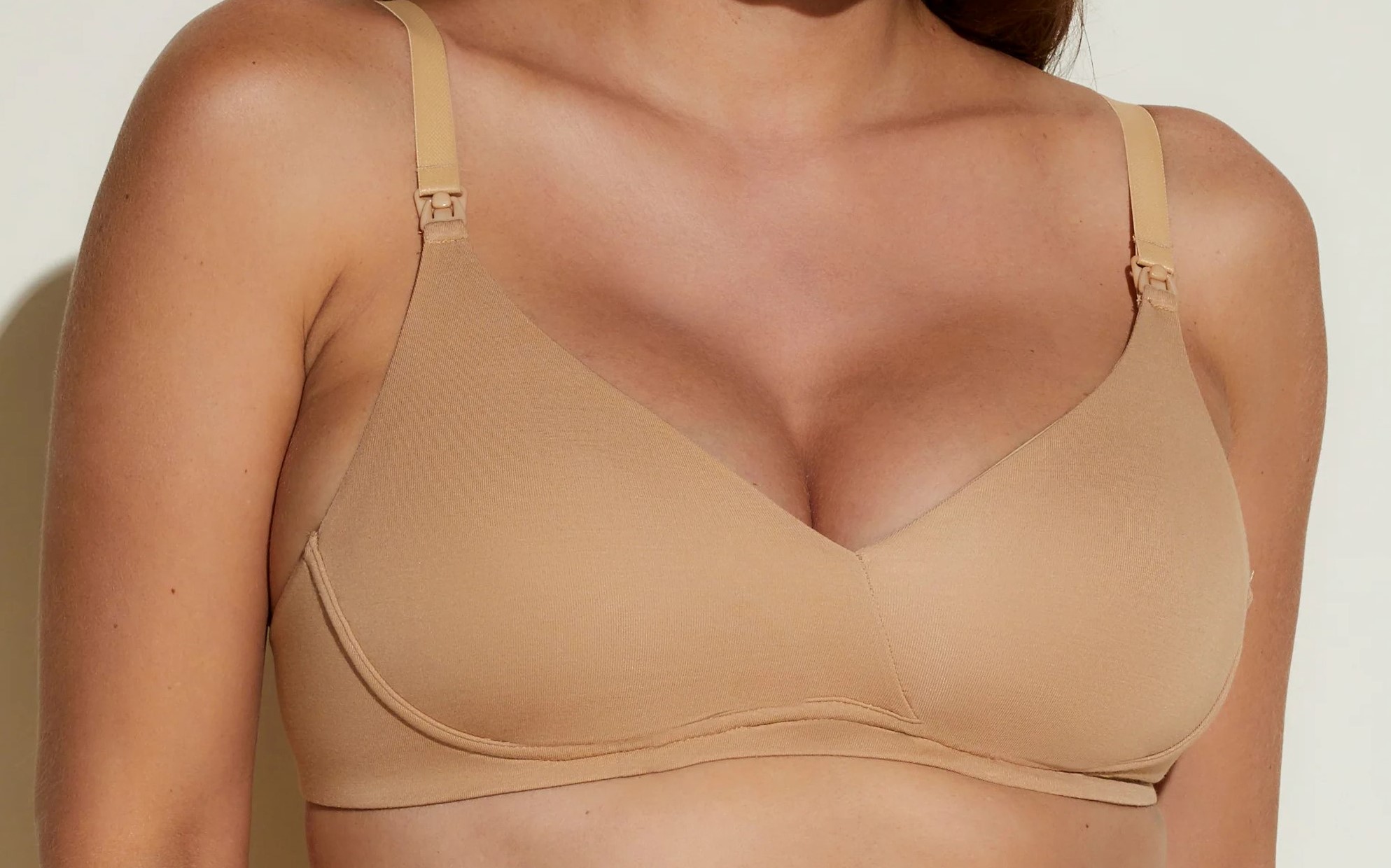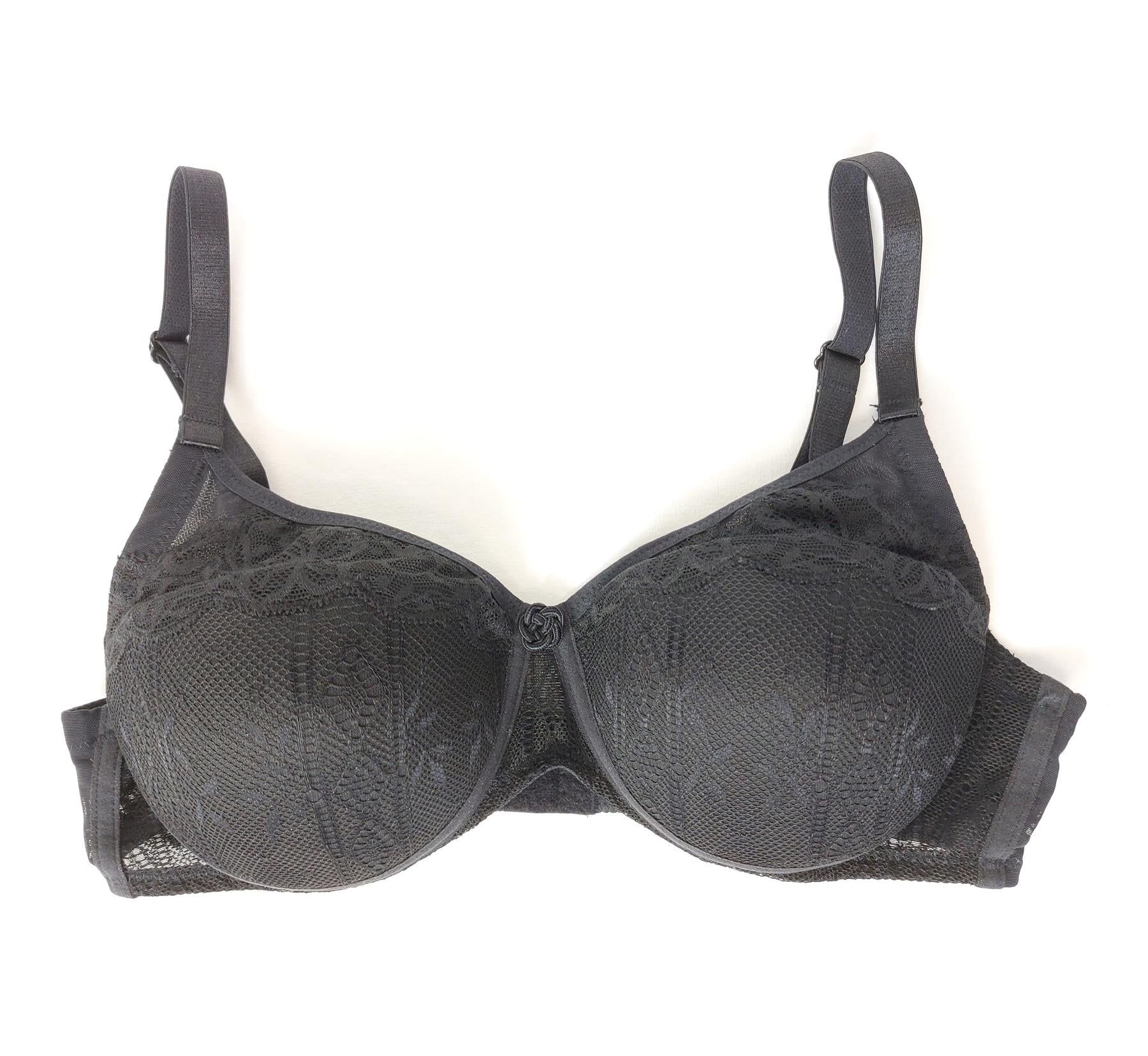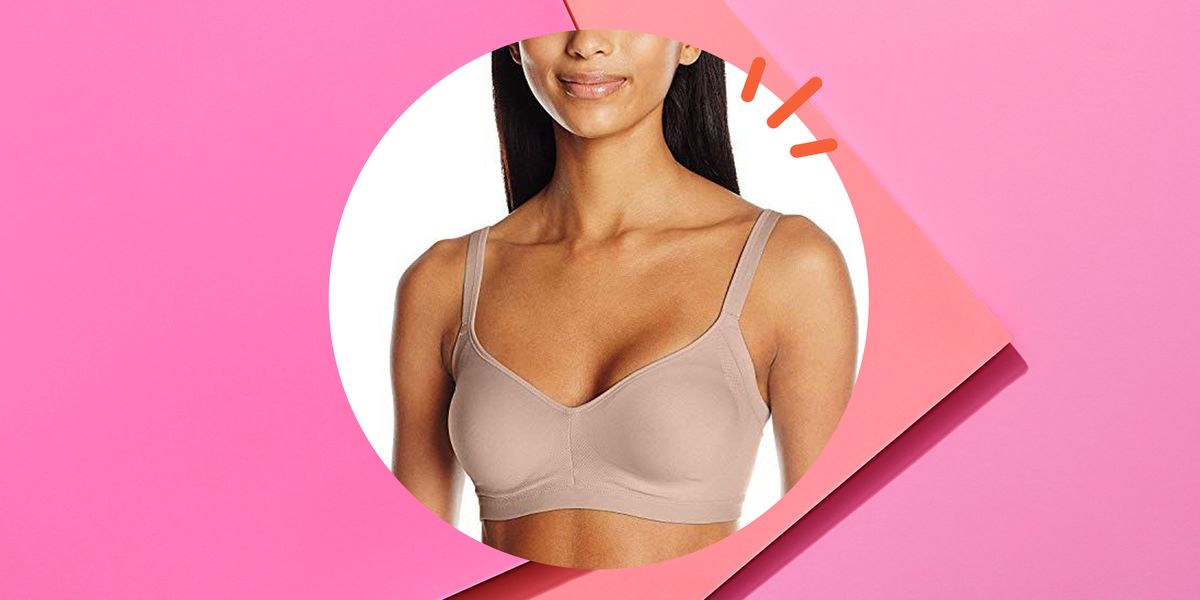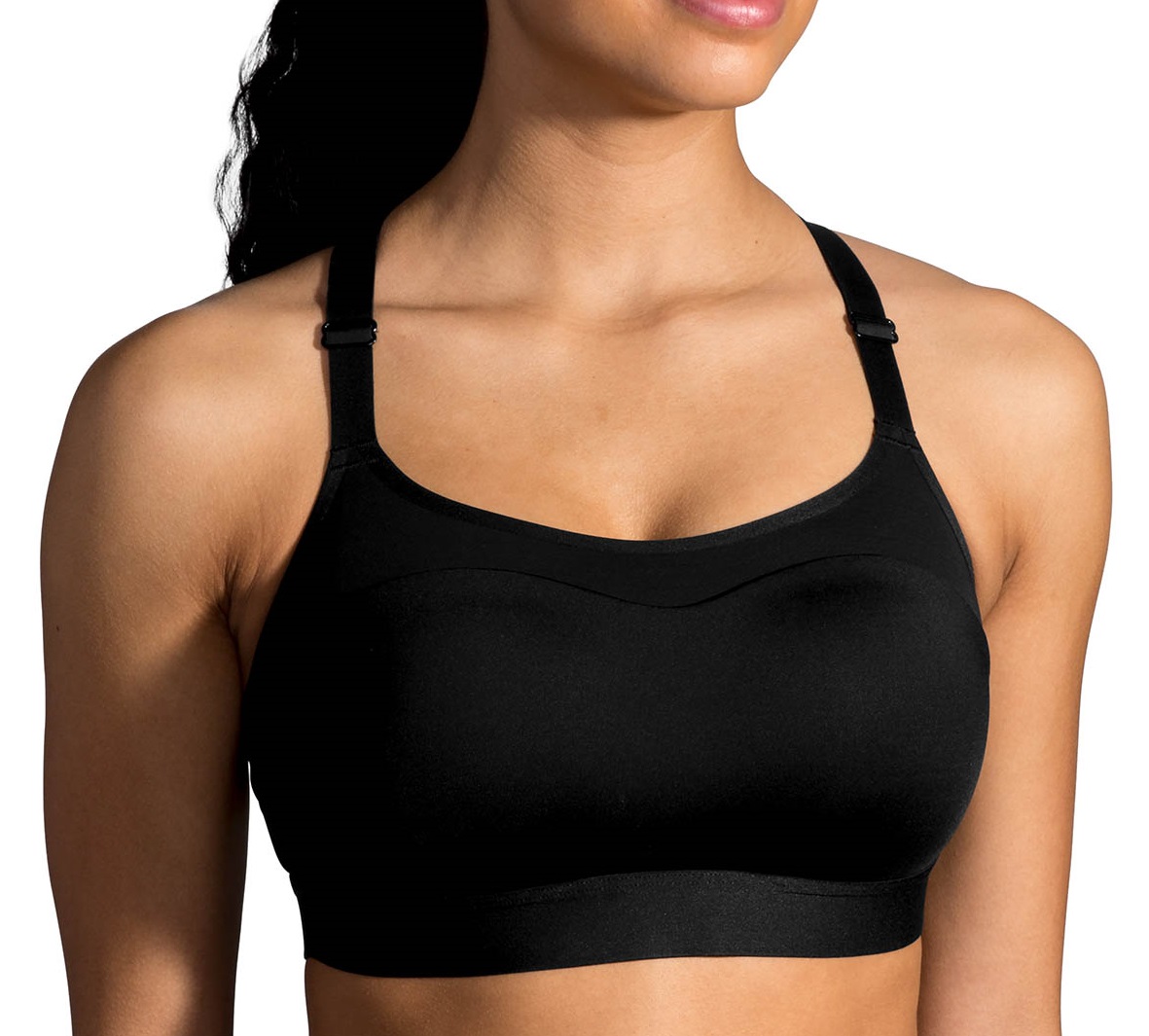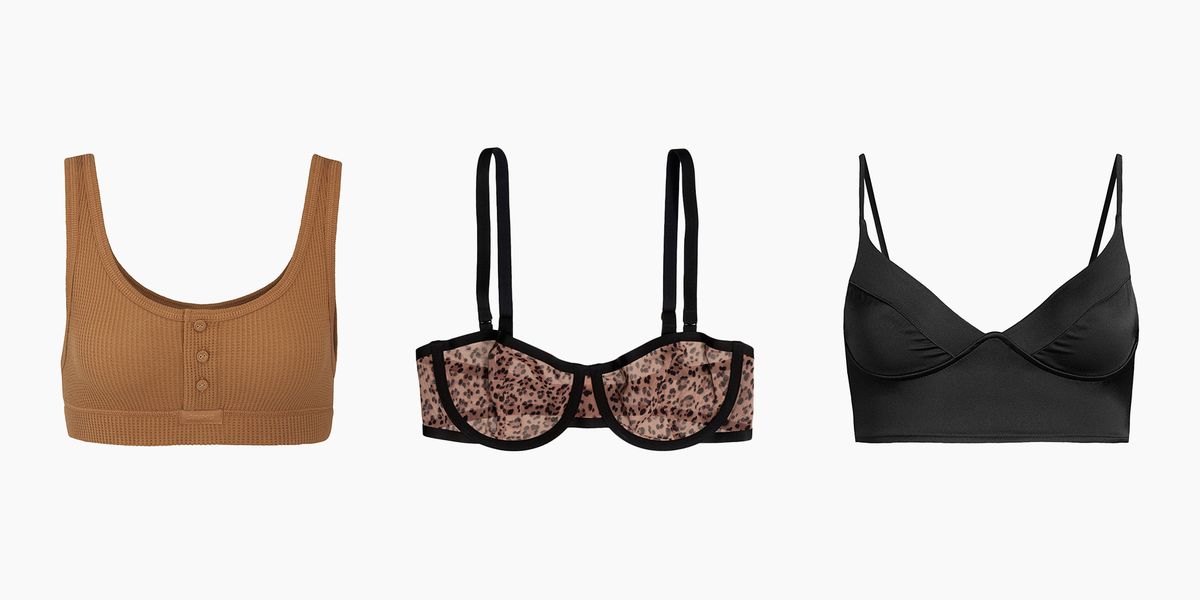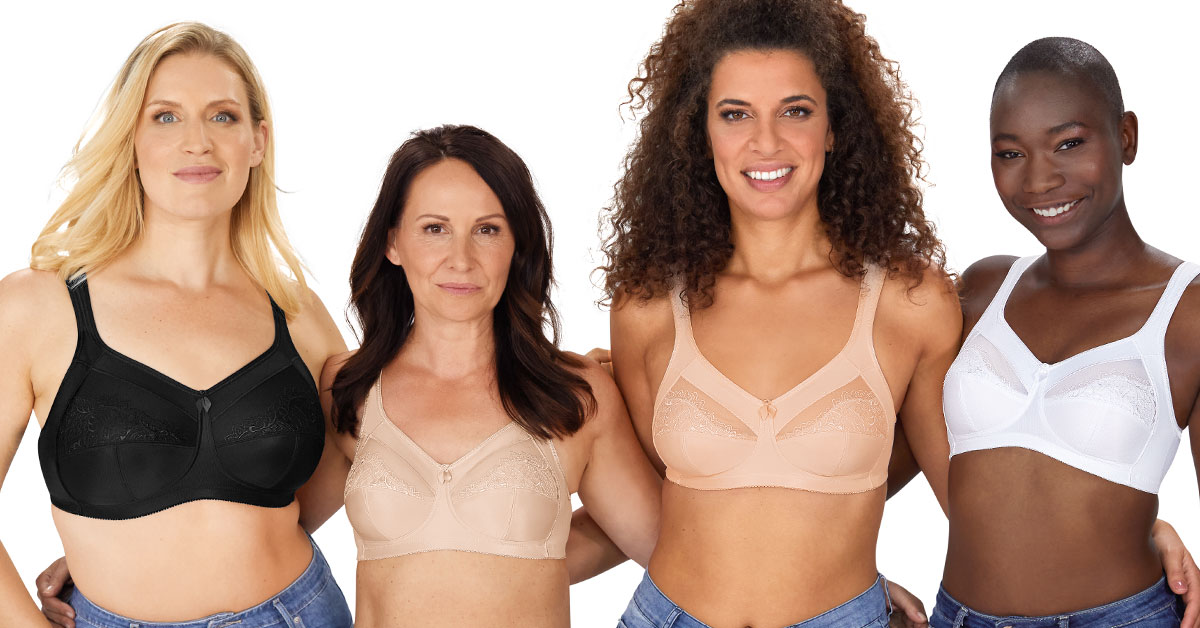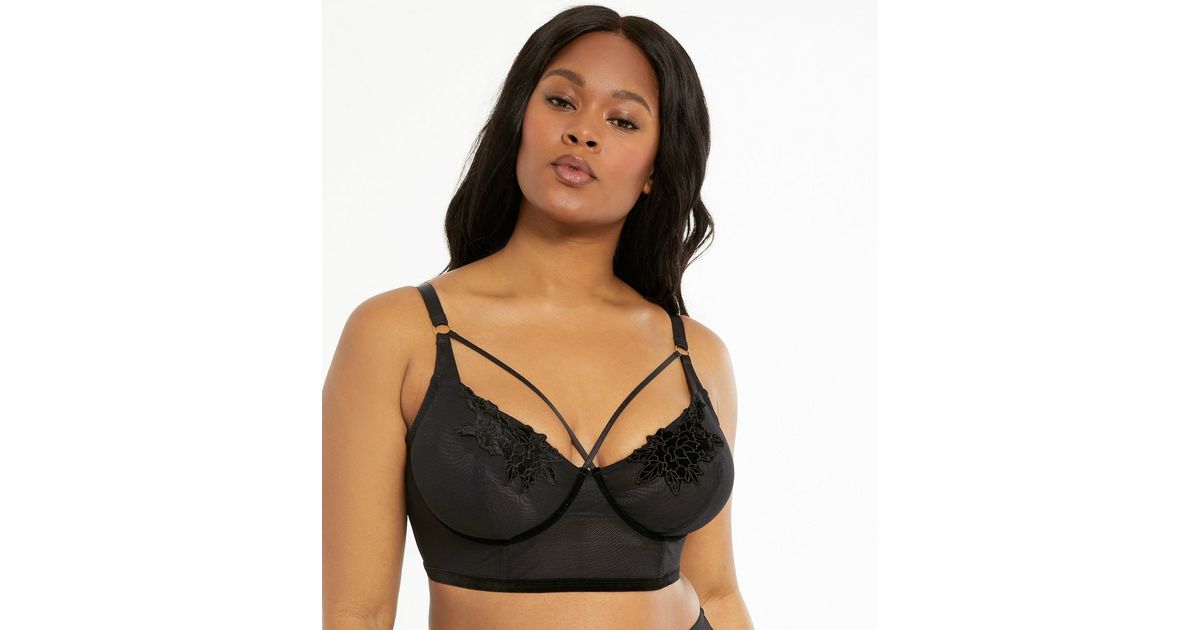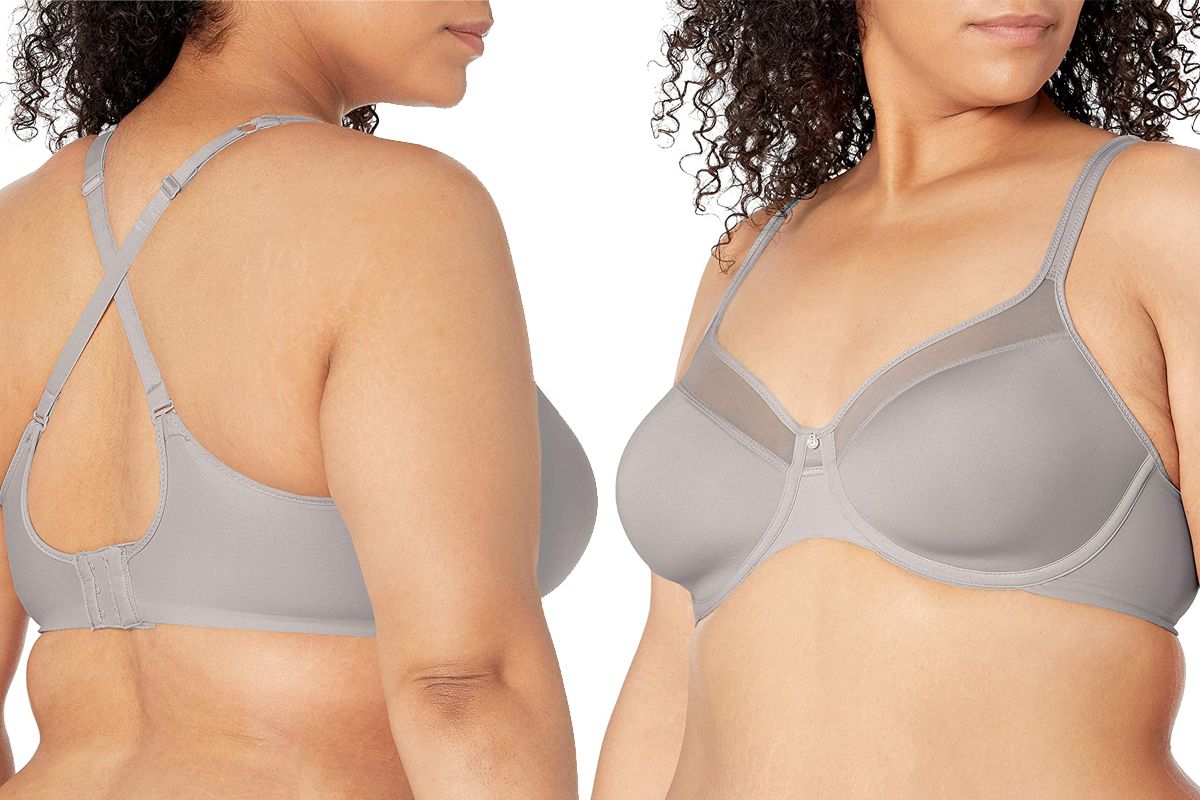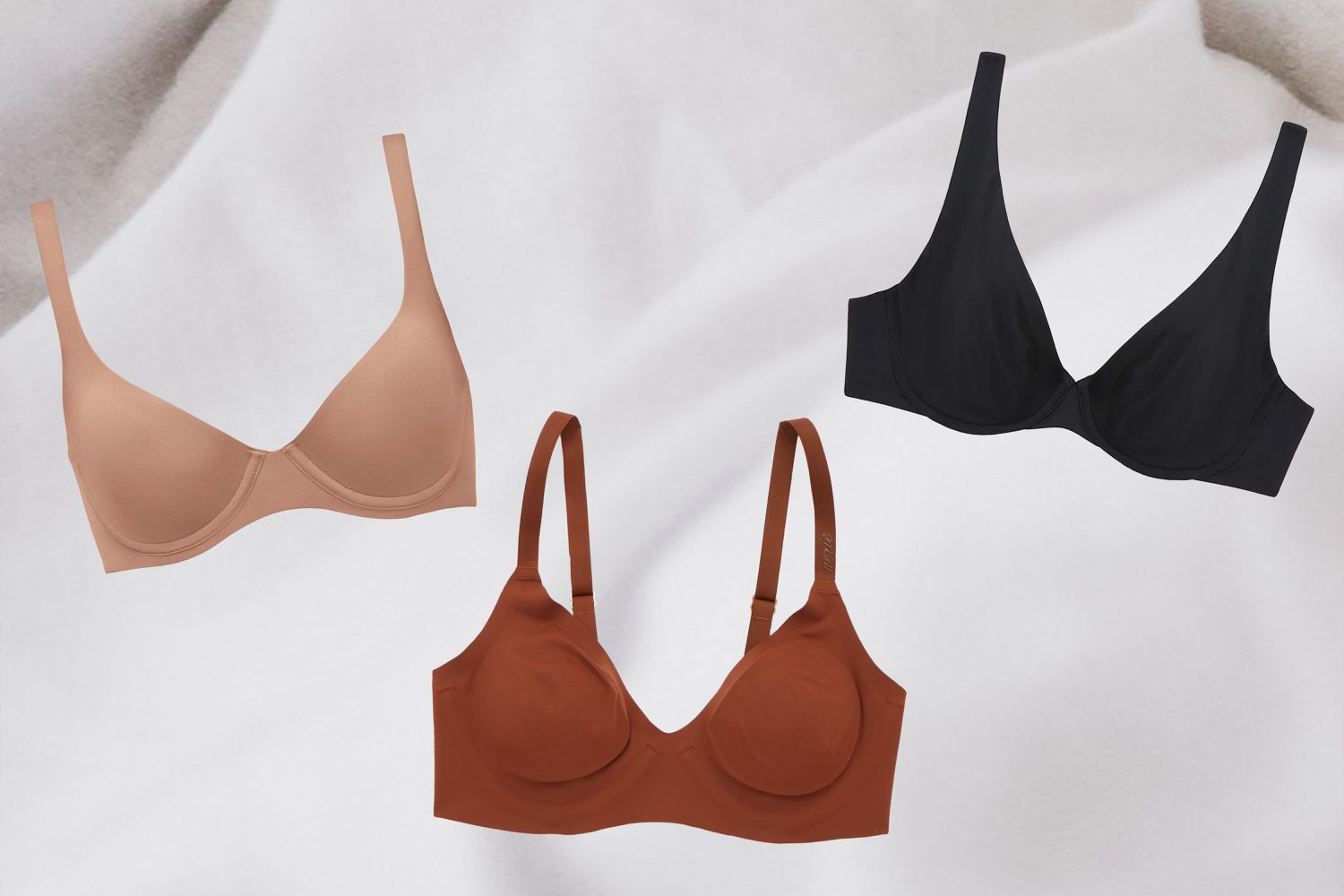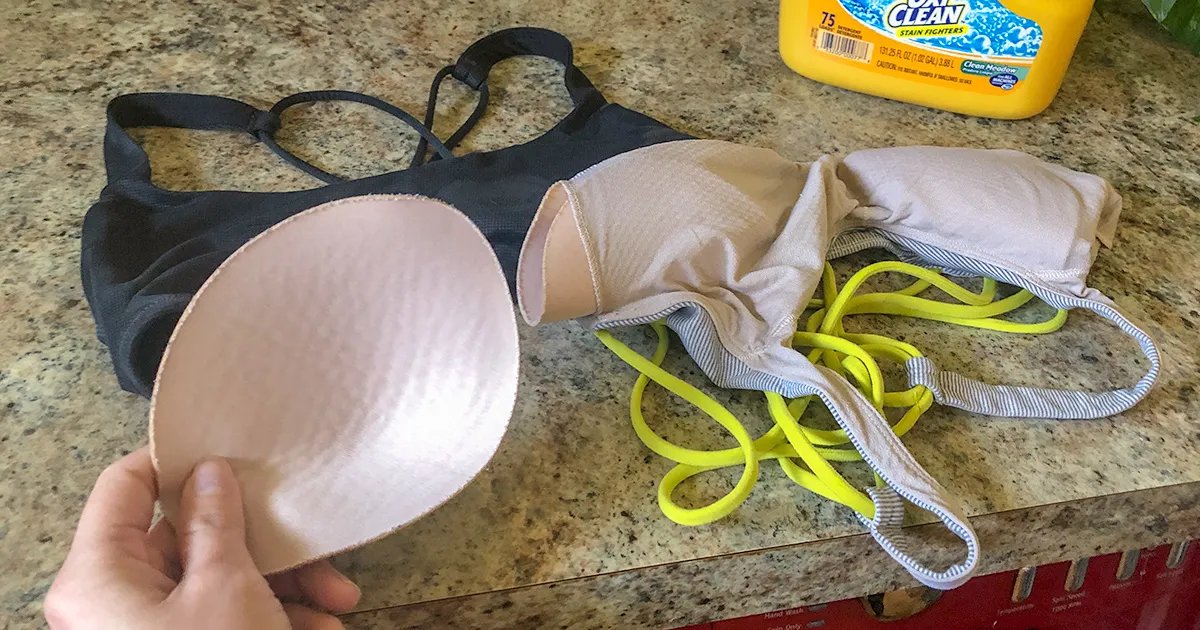Home>Women's Underwear>Bras>What Is A Bra For
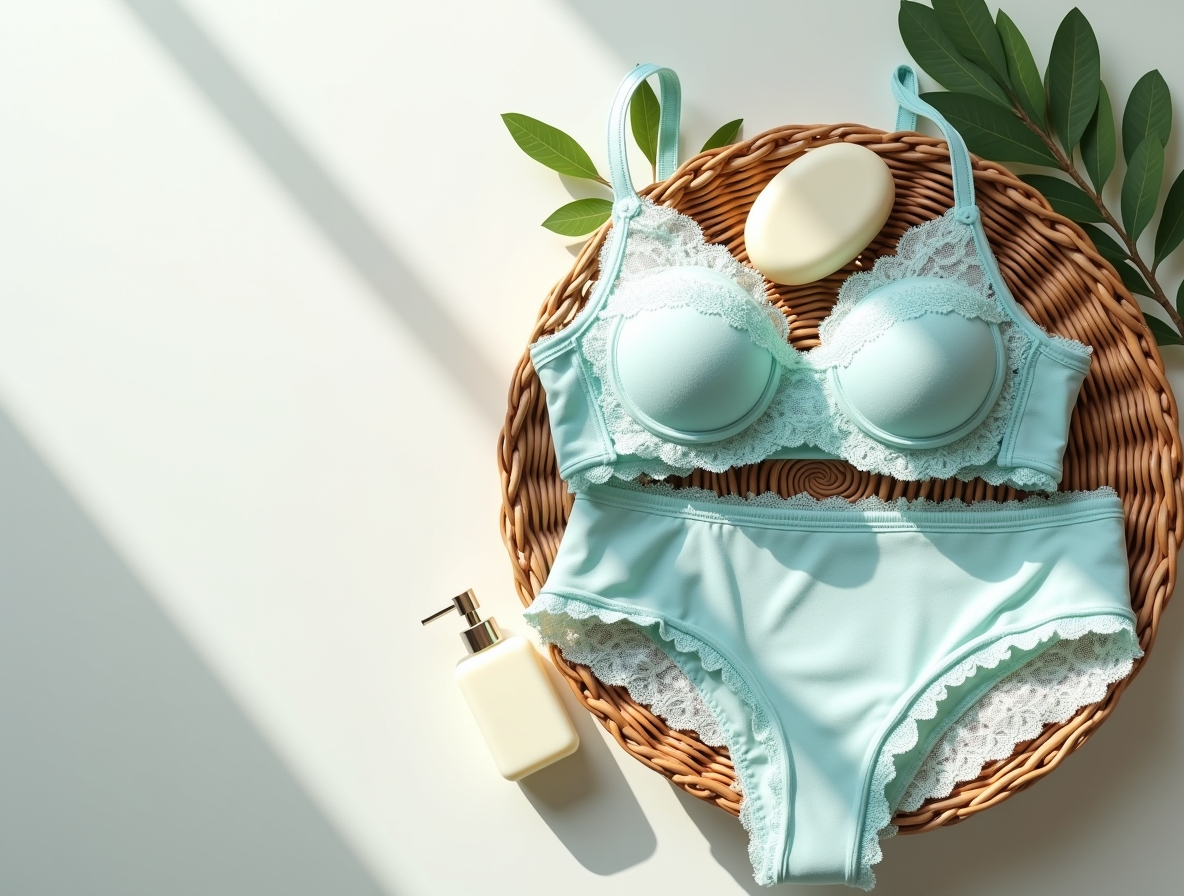

Bras
What Is A Bra For
Modified: September 23, 2023
Discover the purpose of bras and why they are essential for women. Learn about the benefits and different types of bras available for all body types.
(Many of the links in this article redirect to a specific reviewed product. Your purchase of these products through affiliate links helps to generate commission for Under-tec.com, at no extra cost. Learn more)
Table of Contents
Introduction
Welcome to the world of brassieres, commonly known as bras. Whether you love them or loathe them, bras are an integral part of many women’s wardrobes. These undergarments have a long and fascinating history and serve several important purposes. In this article, we will explore the historical background of bras, their purpose and function, different types available, the importance of finding the right fit, common mistakes to avoid, as well as dispelling some bra myths and misconceptions.
For centuries, women have sought ways to support and shape their breasts. The concept of a bra dates back to ancient civilizations, where various forms of breast support were fashioned from different materials. However, it wasn’t until the late 19th century that the modern bra as we know it today began to emerge.
The purpose of a bra is to provide support, lift, and shape to the breasts. Designed to fit snugly around the upper torso, bras use various components such as underwire, padding, and straps to offer support and enhance the natural contours of the breasts. Apart from their functional purpose, bras also serve as a fashion statement, with different styles, colors, and designs to suit individual preferences.
There are numerous types of bras to choose from, each designed for a specific purpose or outfit. From everyday bras for comfortable wear to push-up bras for added cleavage, sports bras for active pursuits, and strapless bras for special occasions, there is a bra for every need. It is essential to understand the different types of bras available and select one that suits your body shape, size, and desired level of support.
Finding the right bra size and fit is crucial for comfort and breast health. Ill-fitting bras can cause discomfort, pain, and even shoulder or back problems. It is recommended to get professionally fitted to ensure the bra provides the best support and comfort. Remember that bra sizes can vary between brands, so it is essential to try on different bras to find the perfect fit.
Wearing the right bra not only enhances your appearance but also boosts your confidence. The correct fit can provide better posture, reduce sagging, and make your clothes fit better. Conversely, wearing the wrong bra size or style can lead to discomfort, skin irritation, and an unflattering silhouette.
Historical Background
The concept of using garments to support and shape the breasts dates back thousands of years. Ancient civilizations, such as ancient Greece and Rome, employed various methods to uplift and accentuate the bosom. These methods included using strips of cloth, bandaging, or even pieces of leather to provide support.
It wasn’t until the late 19th century that the modern bra emerged. In 1889, a French corset maker named Herminie Cadolle invented the “corselet gorge”, a two-piece garment that separated the bust area from the corset. This design was a breakthrough in bra history, as it provided greater freedom of movement and improved comfort for women.
Shortly after, in 1914, Mary Phelps Jacob (later known as Caresse Crosby) patented the “backless brassiere”. This innovative design featured two handkerchiefs and a ribbon, providing a more comfortable alternative to the restrictive corsets of the time. The popularity of this new undergarment spread quickly, leading to the birth of the modern bra.
Throughout the 20th century, advancements in fabrics, technology, and fashion trends influenced the evolution of bras. The 1920s saw a shift towards flapper-style bras that minimized the bust, reflecting the fashionable “boyish” silhouette of the era. In contrast, the 1950s embraced the hourglass figure, giving rise to the iconic bullet bras that emphasized a pointed shape.
The feminist movement of the 1960s and 1970s brought about a significant shift in bra-wearing attitudes. Women began challenging societal beauty standards and questioning the need for restrictive undergarments. The bra-burning protests symbolized a rejection of the traditional expectations placed on women and sparked conversations about body positivity and comfort.
In recent years, the bra industry has seen a surge in innovation, with advancements in materials, designs, and inclusive sizing options. Brands are focusing on creating bras that cater to diverse body types and provide both style and functionality.
Understanding the historical background of bras helps us appreciate how far they have come and how they have evolved to meet the changing needs and desires of women. While bras have a functional purpose, they have also become a symbol of empowerment, self-expression, and individuality.
Purpose and Function of Bras
Bras serve several important purposes beyond just being a fashion accessory. They provide support, lift, and shape to the breasts, ensuring comfort and maintaining a desirable silhouette. Let’s delve deeper into the various functions that bras fulfill:
1. Support: One of the primary purposes of a bra is to provide support to the breasts. The breast tissue is supported by ligaments called Cooper’s ligaments, and wearing a well-fitted bra can help minimize stretching and sagging over time. Bras with underwire or molded cups offer additional support, particularly for those with larger breasts.
2. Lift and Shape: Bras are designed to lift and shape the breasts, enhancing their appearance. They can create a more youthful and attractive silhouette by giving the breasts a rounded and lifted look. This is especially beneficial for individuals with naturally pendulous or asymmetrical breasts.
3. Comfort: By offering support and minimizing breast movement, bras can provide enhanced comfort, especially during physical activities or throughout the day. The right bra can alleviate discomfort and reduce strain on the back and shoulders, preventing pain and discomfort caused by unsupported breasts.
4. Modesty: Bras can provide a sense of modesty by covering and concealing the nipples. They also create a smooth and polished look under clothing, preventing any unsightly outlines or protrusions.
5. Posture Improvement: Wearing a well-fitted bra can contribute to improved posture by supporting the chest and shoulders. A proper bra fit can help distribute the weight of the breasts evenly, promoting better alignment of the spine and reducing the risk of pain and discomfort in the back and neck areas.
6. Confidence Boost: Bras can boost self-confidence and body image. When a woman feels supported, lifted, and comfortable in her bra, she tends to feel more confident and attractive in her overall appearance. The right fitting bra can enhance the way clothes fit and flatter the figure, boosting self-esteem.
7. Sports Performance: For active individuals, sports bras are essential to minimize breast movement and discomfort during physical activities. Sports bras provide additional support and compression, reducing the risk of breast pain or damage to the underlying breast tissue caused by repetitive motion.
Bras are not a one-size-fits-all solution. Each individual has unique breast characteristics, body shape, and personal preferences, which is why finding the right bra style, size, and fit is crucial. A well-chosen bra can provide optimal support, comfort, and confidence, making it an essential component of every woman’s wardrobe.
Types of Bras
Bras come in a wide variety of styles, each designed to cater to different needs, preferences, and outfits. Understanding the different types of bras available can help you find the perfect fit for your body shape and desired level of support. Here are some of the most common types:
1. T-Shirt Bra: This is a seamless, molded cup bra that offers a smooth appearance under fitted t-shirts or other tight-fitting tops. T-shirt bras are designed to give a natural shape and provide moderate support.
2. Balconette Bra: Also known as a balconet or shelf bra, this style lifts the breasts and creates a rounded shape. Balconette bras typically have wider set straps and are ideal for low-cut or square-neckline tops.
3. Push-Up Bra: Designed to enhance the cleavage and create a fuller appearance, push-up bras add lift and volume to the breasts. They feature extra padding or built-in inserts for an enhanced push-up effect.
4. Sports Bra: Specifically designed for physical activities, sports bras minimize breast movement and provide support during high-impact exercises. They come in various levels of support, from low-impact for yoga and pilates to high-impact for running and intense workouts.
5. Bralette: This is a soft, unstructured bra with minimal or no underwire. Bralettes are known for their comfort and are a popular option for those looking for lightweight support or a relaxed, natural look.
6. Strapless Bra: As the name suggests, a strapless bra is designed without shoulder straps, making it suitable for outfits that expose the shoulders or have thin straps. They typically feature silicone along the edges to keep them in place.
7. Plunge Bra: This style has a deep V-shaped neckline, making it ideal for low-cut tops and dresses. Plunge bras enhance the cleavage and offer a supportive lift.
8. Nursing Bra: Designed for breastfeeding mothers, nursing bras have features such as drop-down cups or detachable flaps to facilitate easy access for breastfeeding. They provide comfort and support while accommodating changes in breast size.
9. Minimizer Bra: These bras are meant to reduce the appearance of the bust size by redistributing breast tissue. They provide a more subtle and minimized silhouette, making them ideal for individuals with fuller breasts.
10. Convertible Bra: Convertible bras come with adjustable and detachable straps, allowing them to be worn in multiple ways. They can be transformed into halter neck, criss-cross, or one-shoulder styles to suit various outfits.
Remember that each individual may have different preferences and requirements when it comes to bra styles, so it’s important to try on different types to find the ones that fit best and provide the desired support and comfort.
Fitting and Sizing
Proper fitting and sizing of bras are essential for comfort, support, and overall breast health. Wearing the wrong size can lead to discomfort, pain, and even long-term issues. Here are some important factors to consider when it comes to fitting and sizing:
1. Band Measurement: The band size is determined by measuring the circumference of your rib cage, just below the breasts. The band should provide a snug fit without digging into the skin. If the band rides up at the back or feels too loose, consider going down a band size.
2. Cup Measurement: The cup size is determined by measuring the fullest part of the breasts, typically at nipple level. This measurement is then subtracted from the band measurement to determine the cup size (e.g., A, B, C, D, etc.). Cup size can vary between brands, so it’s essential to try on different bras to find the perfect fit.
3. Underwire Placement: If you opt for an underwire bra, ensure that the underwire lies flat against the rib cage and encases the breasts fully. The underwire should not dig into the breast tissue or poke at the sides.
4. Center Gore: The center gore is the part of the bra that sits between the cups. It should lie flat against the sternum, with no gaps or digging into the breastbone. A properly fitted center gore ensures optimal support and stability.
5. Strap Length and Adjustability: The shoulder straps should be easily adjustable to find the right level of lift and support. They should not dig into the shoulders or slip off. Adjust the straps to ensure a comfortable fit that provides adequate support.
6. Try Different Styles: Different bra styles and brands can vary in fit, so it’s worthwhile to try on various styles to find the ones that suit your breast shape and body type. Pay attention to the coverage, shape, and support provided by different bra styles.
7. Professional Fitting: Getting professionally fitted by a bra specialist can be invaluable. These experts have the knowledge and experience to accurately assess your size and suggest suitable styles. Many lingerie stores offer free fitting services.
Remember that your bra size can change over time due to factors such as weight fluctuations, hormonal changes, or pregnancy. It’s important to reevaluate your bra size periodically and invest in well-fitting bras for optimal comfort and support. Overall, finding the right fit can make a significant difference in your comfort, confidence, and overall well-being.
Importance of Wearing the Right Bra
Wearing the right bra is more than just a matter of comfort and aesthetics. It plays a vital role in maintaining breast health, overall posture, and boosting confidence. Here are some reasons why wearing the right bra is crucial:
1. Support and Comfort: A properly fitted bra offers the necessary support to the breasts, minimizing discomfort, strain, and potential pain. It helps distribute the weight of the breasts evenly, reducing the risk of shoulder, neck, and back pain. Wearing an ill-fitting bra can cause discomfort, skin irritation, and even restrict breathing.
2. Breast Health: Wearing the right bra can help maintain breast health. The appropriate support prevents excessive bouncing and movement of the breasts, which can lead to tissue stretching and discomfort during physical activities. It also minimizes the risk of ligament damage and sagging over time.
3. Posture Improvement: A well-fitted bra contributes to better posture by providing support to the chest and shoulders. It helps align the spine, reducing the strain on the back and neck muscles. Good posture not only improves physical health but also enhances confidence and overall appearance.
4. Enhanced Silhouette: The right bra can create a more flattering silhouette by lifting and shaping the breasts. It can improve the fit and appearance of clothing, making them look better and providing a boost to self-esteem and body confidence.
5. Active Lifestyle Support: For individuals with an active lifestyle, wearing a sports bra during physical activities is essential. Sports bras minimize breast movement, reducing the risk of discomfort, pain, and even tissue damage during exercise or sports. They provide the required support to ensure a comfortable and more enjoyable workout experience.
6. Psychological Benefits: Wearing the right bra that fits well and makes you feel comfortable can have a positive impact on your self-esteem and body image. It can boost confidence and make you feel more confident in your appearance, ultimately enhancing your overall well-being.
7. Preventing Bra-Related Issues: Ill-fitting bras can cause a range of bra-related issues, such as chafing, redness, marks, and skin irritation. By wearing a properly fitted bra, you can avoid these discomforts and potential damage to the skin.
Remember that every individual’s body is unique, and finding the right bra involves experimentation and understanding your own breast size, shape, and comfort preferences. It’s essential to prioritize your comfort and invest in well-fitting bras to promote breast health, support proper posture, and boost overall confidence and well-being.
Common Mistakes to Avoid
When it comes to wearing bras, there are several common mistakes that many people make. These mistakes can lead to discomfort, improper support, and even potential health problems. To ensure you have the best bra-wearing experience, here are some common mistakes to avoid:
1. Wearing the Wrong Size: Perhaps the most common mistake is wearing the wrong bra size. Many people are unaware of their correct size or don’t take the time to get properly fitted. Wearing the wrong size can lead to discomfort, pain, and lack of support. Take the time to get professionally fitted or measure yourself accurately to find the right size.
2. Ignoring the Band Size: The band is the foundation of a bra’s support, so it’s crucial to get the right band size. Many people wear a band that is too loose, compromising the support and causing the bra to ride up. Make sure the band fits snugly around your rib cage without digging in or feeling too tight.
3. Neglecting the Cup Size: Equally important is wearing the correct cup size. Wearing a cup size that is too small can result in spillage and discomfort, while wearing a cup size that is too large can lead to a lack of support and a sagging appearance. Ensure the cups fully encase your breasts without any spillage or gaps.
4. Not Adjusting the Straps: Many people forget to adjust the bra straps to their desired level of support. Straps that are too loose can cause the bra to sag, whereas straps that are too tight can dig into the shoulders and cause discomfort. Regularly check and adjust the straps to ensure a comfortable and secure fit.
5. Sticking to One Bra Style: It’s important to experiment with different bra styles to find what works best for your body shape and outfit choices. Don’t be afraid to try different styles, such as balconette, plunge, or wireless bras. Each style offers a different level of support and shape, so broaden your horizons and find what works for you.
6. Neglecting Sports Bras: Engaging in physical activities without proper support can cause discomfort and even damage to breast tissue. Investing in a well-fitted sports bra that offers sufficient support is crucial during workouts or any other physical activities that involve movement.
7. Not Replacing Worn-Out Bras: Bras, like any other garment, have a lifespan. Over time, the elasticity and support of bras can deteriorate, and undergarments can become worn-out or stretched. Be sure to regularly assess the condition of your bras and replace them when necessary to maintain optimal support and comfort.
Avoiding these common mistakes will help you have a more comfortable and supportive bra-wearing experience. Remember, wearing the right size, adjusting the straps properly, and exploring different styles are key to finding the perfect bra fit.
Bra Myths and Misconceptions
Over the years, several myths and misconceptions surrounding bras have arisen, leading to confusion and misinformation. Let’s debunk some of the common bra myths and set the record straight:
1. Myth: Sleeping in a Bra Prevents Sagging – Many people believe that wearing a bra while sleeping can prevent breast sagging. However, there is no scientific evidence to support this claim. In fact, wearing a bra overnight may restrict blood flow and contribute to discomfort.
2. Myth: Underwire Bras Increase the Risk of Breast Cancer – There is no conclusive scientific evidence to suggest that underwire bras increase the risk of breast cancer. Underwire bras are safe to wear, provided they are properly fitted and not causing discomfort or injury.
3. Myth: Wearing a Bra Causes Breast Cancer – Wearing a bra does not cause breast cancer. Breast cancer is a complex disease influenced by various genetic and lifestyle factors, and wearing or not wearing a bra has no direct impact on its development.
4. Myth: Bras Should Always Leave Red Marks – A well-fitted bra should not leave painful or significant red marks on the skin. Red marks that disappear after removing the bra are normal. If the marks are painful or take a long time to fade, it may be a sign that the bra is too tight or the wrong size.
5. Myth: All Bras Must Have Underwire for Support – Underwire bras provide additional support for some individuals, but they are not necessary for everyone. Wireless bras, if properly fitted, can offer adequate support and be more comfortable for daily wear.
6. Myth: Wearing a Bra Will Prevent Breast Growth – Wearing or not wearing a bra does not impact breast growth or development. Breast size and shape are primarily determined by genetics and hormonal factors, not by the act of wearing a bra.
7. Myth: All Bras of the Same Size Fit the Same – Bra sizing can vary between brands and even different styles within the same brand. It’s crucial to try on bras and find the right fit for your unique shape and preferences. A specific size in one brand may fit differently in another.
It’s important to separate facts from fiction when it comes to bras. Understanding the truth behind these myths can help individuals make informed decisions and find the right bras that provide comfort, support, and confidence.
Conclusion
Bras have evolved significantly over time, serving not just as functional undergarments but also as a means of self-expression and confidence. Understanding the historical background, purpose, and different types of bras can help us appreciate their importance in our daily lives.
Wearing the right bra is crucial for comfort, support, and overall well-being. Avoiding common mistakes such as wearing the wrong size, neglecting proper adjustment, or sticking to one style can make a significant difference in how a bra feels and performs.
Dispelling common myths and misconceptions surrounding bras is important for separating fact from fiction. Understanding that wearing a bra does not cause breast cancer or sagging, and that finding the right style and fit is individualized, can help individuals make informed decisions about their undergarments.
Whether it’s a supportive T-shirt bra for everyday wear, a sports bra for an active lifestyle, or a special occasion strapless bra, finding the right fit and style can enhance comfort, support, and confidence. Investing in well-fitted bras that cater to your unique body shape and needs is essential for breast health, posture improvement, and self-esteem.
So, embrace the world of bras, explore different styles, get fitted by professionals, and prioritize your comfort and well-being. Remember, your bra is not just a garment – it’s a supportive ally that can make you feel confident, comfortable, and beautiful every day.
